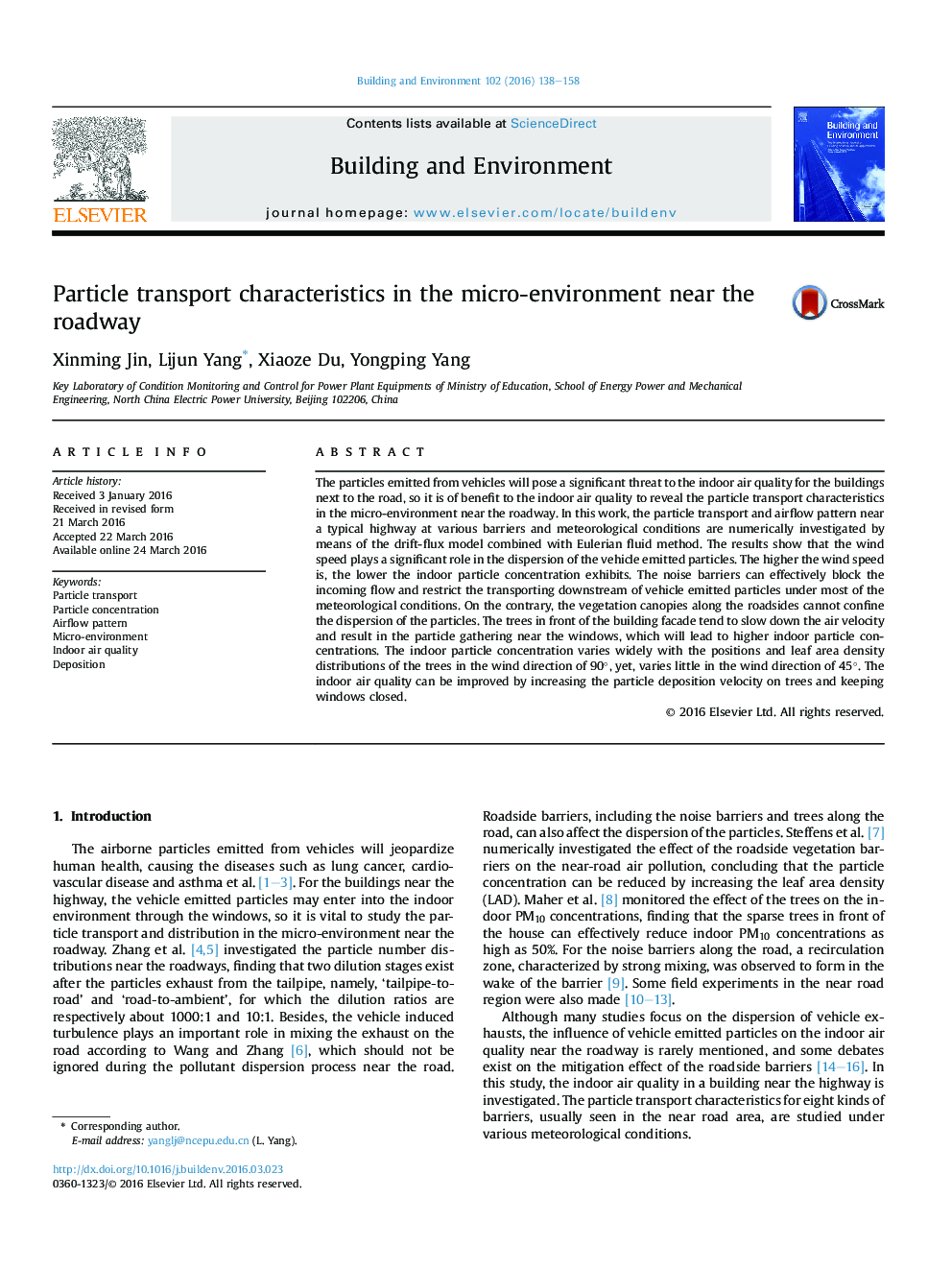| Article ID | Journal | Published Year | Pages | File Type |
|---|---|---|---|---|
| 6699293 | Building and Environment | 2016 | 21 Pages |
Abstract
The particles emitted from vehicles will pose a significant threat to the indoor air quality for the buildings next to the road, so it is of benefit to the indoor air quality to reveal the particle transport characteristics in the micro-environment near the roadway. In this work, the particle transport and airflow pattern near a typical highway at various barriers and meteorological conditions are numerically investigated by means of the drift-flux model combined with Eulerian fluid method. The results show that the wind speed plays a significant role in the dispersion of the vehicle emitted particles. The higher the wind speed is, the lower the indoor particle concentration exhibits. The noise barriers can effectively block the incoming flow and restrict the transporting downstream of vehicle emitted particles under most of the meteorological conditions. On the contrary, the vegetation canopies along the roadsides cannot confine the dispersion of the particles. The trees in front of the building facade tend to slow down the air velocity and result in the particle gathering near the windows, which will lead to higher indoor particle concentrations. The indoor particle concentration varies widely with the positions and leaf area density distributions of the trees in the wind direction of 90°, yet, varies little in the wind direction of 45°. The indoor air quality can be improved by increasing the particle deposition velocity on trees and keeping windows closed.
Keywords
Related Topics
Physical Sciences and Engineering
Energy
Renewable Energy, Sustainability and the Environment
Authors
Xinming Jin, Lijun Yang, Xiaoze Du, Yongping Yang,
